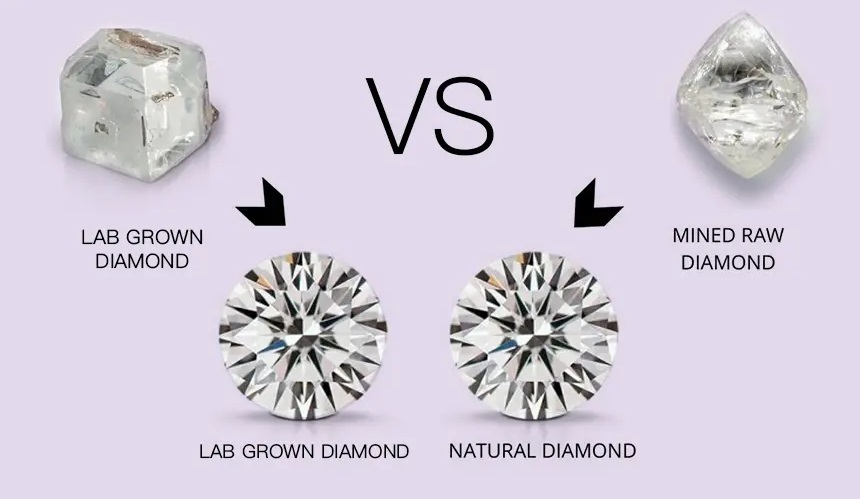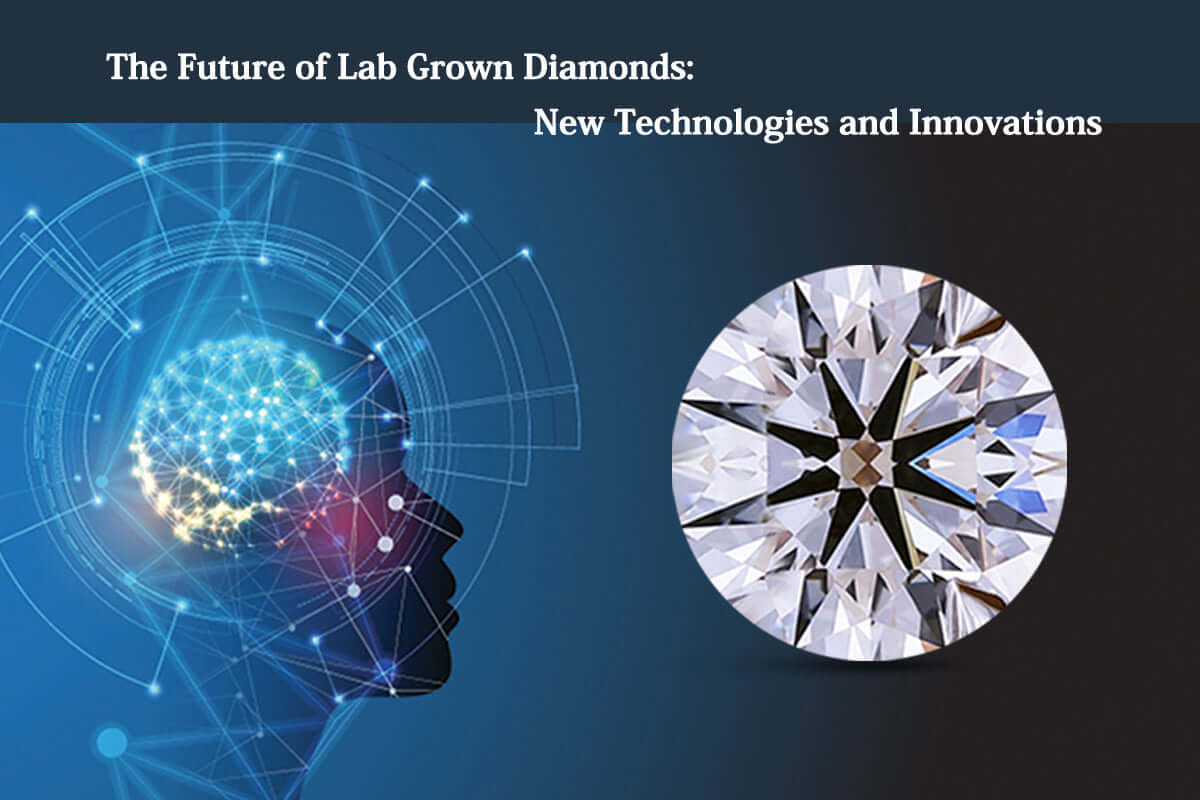What are Artificial Diamonds? | How are they Different to Natural Diamonds?What are Artificial Diamonds? | How are they Different to Natural Diamonds?
Diamonds have long captivated the human imagination with their unparalleled brilliance and timeless allure. However, the landscape of the diamond industry has evolved with the advent of artificial diamonds. In this article, we delve into the fascinating world of artificial diamonds, exploring what they are, how they differ from natural diamonds, their diverse applications in cutting-edge technologies, and the intriguing process of creating these gems in a laboratory setting.
What are Artificial Diamonds?
Formation:
Artificial diamonds, also known as synthetic or lab-grown diamonds, are created through advanced technological processes that replicate the conditions under which natural diamonds form. While natural diamonds are formed deep within the Earth’s mantle over millions of years under high pressure and temperature, artificial diamonds are produced in a matter of weeks or months in controlled laboratory environments.
Composition:
Both natural and artificial diamonds share the same carbon crystal structure, making them chemically identical. The distinguishing factor lies in their origin and the growth process.
How are Artificial Diamonds Different to Natural Diamonds?

Origin:
- Natural Diamonds:
- Formed deep within the Earth’s mantle through geological processes involving carbon subjected to intense pressure and high temperatures.
- Extracted through mining operations, often from kimberlite pipes.
- Artificial Diamonds:
- Created in a laboratory setting using high-pressure high-temperature (HPHT) or chemical vapor deposition (CVD) methods.
- Grown under controlled conditions that mimic the natural diamond-forming process.
Inclusions and Imperfections:
- Natural Diamonds:
- May contain inclusions, blemishes, and unique characteristics formed during their natural growth.
- Rarity and value are influenced by the presence of these features.
- Artificial Diamonds:
- Can be produced with fewer or no inclusions, offering a high degree of clarity.
- The controlled environment allows for the creation of diamonds with specific characteristics.
Cost:
- Natural Diamonds:
- Typically more expensive due to the geological and mining processes involved.
- Rarity, size, and quality are key factors influencing natural diamond prices.
- Artificial Diamonds:
- Generally more affordable as they can be produced on-demand.
- Prices may vary based on the manufacturing process, size, and quality.
Artificial Diamonds and Their Numerous Use Cases in New Technologies
Artificial diamonds, or lab-grown diamonds, have emerged as versatile materials with numerous applications in cutting-edge technologies. Their unique physical and chemical properties make them valuable across various industries. Here are some of the notable use cases of artificial diamonds in new technologies:

- Cutting Tools and Industrial Applications:
- Hardness and Precision: Artificial diamonds are renowned for their exceptional hardness, making them ideal for cutting tools in industries such as mining, construction, and manufacturing.
- Durability: The hardness of diamonds ensures prolonged tool life and increased efficiency in cutting and drilling operations.
- Electronics:
- Heat Dissipation: Synthetic diamonds are used as heat sinks in electronic devices. Their high thermal conductivity helps dissipate heat efficiently, preventing electronic components from overheating.
- Conductive Substrates: Diamond substrates are employed in high-power electronic devices for their excellent electrical insulation properties.
- Medical Applications:
- Medical Imaging Devices: Artificial diamonds play a crucial role in the development of medical imaging devices. Their unique properties, including high thermal conductivity and transparency to X-rays, contribute to improved imaging quality.
- Surgical Instruments: Diamond coatings on surgical instruments enhance their durability and biocompatibility, reducing friction and wear during medical procedures.
- Quantum Computing:
- Quantum Information Processing: Certain types of artificial diamonds, such as nitrogen-vacancy (NV) center diamonds, exhibit quantum properties that make them promising candidates for quantum computing applications.
- Quantum Sensing: NV center diamonds are utilized in quantum sensors for detecting and measuring various physical quantities with high precision.
- Optics and Laser Technology:
- Optical Windows: Artificial diamonds are used as optical windows in high-power laser systems. Their transparency and ability to withstand intense laser beams make them suitable for optical components.
- Raman Spectroscopy: Diamonds serve as Raman spectroscopy windows, allowing for accurate and non-destructive analysis of materials.
- Space Exploration:
- Diamond Windows for Sensors: In space applications, synthetic diamonds are employed as windows for sensors and detectors due to their durability and resistance to radiation.
- Thermal Management: The exceptional thermal conductivity of diamonds makes them useful for thermal management in spacecraft and satellite systems.
- Semiconductor Industry:
- Diamond-Based Transistors: Researchers are exploring the use of diamond-based transistors in the semiconductor industry, leveraging the unique electronic properties of diamonds for advanced electronic devices.
- High-Performance Electronics:
- High-Frequency Electronics: The electrical properties of diamonds, combined with their thermal conductivity, make them suitable for high-frequency and high-power electronic applications.
- Water Purification:
- Electrochemical Water Treatment: Artificial diamonds are used in electrochemical water treatment systems, where they serve as electrodes for advanced oxidation processes, contributing to water purification.
- Aerospace Industry:
- Diamond-Coated Components: Diamond-coated components enhance the durability and wear resistance of aerospace components subjected to extreme conditions.
Artificial diamonds continue to unlock new possibilities in technology, offering innovative solutions across diverse industries. As research and development in diamond synthesis advance, their applications are expected to expand, contributing to advancements in materials science, electronics, and quantum technologies.
How to Make Artificial Diamonds?
High-Pressure High-Temperature (HPHT) Method:
- Diamond Seed:
- A small diamond seed crystal is placed in a high-pressure press.
- Carbon Source:
- A carbon source, often in the form of graphite, is added.
- High Pressure and Temperature:
- The press subjects the diamond seed and carbon source to extremely high pressure and temperature, mimicking natural diamond-forming conditions.
- Crystal Growth:
- Carbon atoms precipitate onto the diamond seed, allowing the crystal to grow layer by layer.
Chemical Vapor Deposition (CVD) Method:
- Diamond Seed:
- A diamond seed is placed in a vacuum chamber.
- Gas Mixture:
- A mixture of carbon-containing gases is introduced into the chamber.
- Ionization:
- The gases are ionized using microwaves or other energy sources.
- Carbon Deposition:
- Carbon atoms are deposited onto the diamond seed, enabling crystal growth.
Conclusion
Artificial diamonds represent a remarkable intersection of technological innovation and the enduring beauty of these precious gems. While natural diamonds continue to hold their place in the market, the emergence of lab-grown diamonds has expanded possibilities in various industries. As technology advances and sustainable practices become increasingly important, artificial diamonds offer a glimpse into a future where brilliance meets ingenuity. The journey from the controlled environments of laboratories to the diverse applications in cutting-edge technologies underscores the multifaceted brilliance of artificial diamonds in the modern era.…
